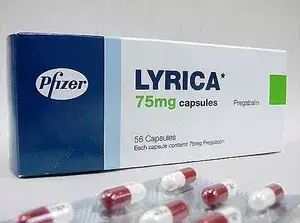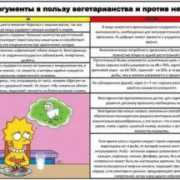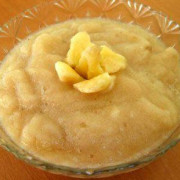Psychonauts
Содержание:
Toxicity and harm potential
Phenibut has a low toxicity relative to dose. However, it is potentially lethal when mixed with depressants like alcohol, benzodiazepines or opioids.
Phenibut hydrochloride is highly caustic and in sensitive users can cause intestinal discomfort and diarrhea with some lower digestive tract bleeding.[citation needed]
Due to the extremely long come up period relative to other substances, some users may experience an urge to redose out of the belief that it is weak or not working. This should be avoided to prevent overdose.
It is strongly recommended that one use harm reduction practices when using this substance.
Tolerance and addiction potential
Phenibut is moderately physically and psychologically addictive, although this usually only occurs with heavy abuse of the substance.
Tolerance will develop to the sedative-hypnotic effects within a couple of days of continuous use.
After cessation, the tolerance returns to baseline in 7 — 14 days.
Withdrawal symptoms or rebound symptoms may occur after ceasing usage abruptly following a few weeks or longer of steady dosing and may necessitate a gradual dose reduction. Withdrawal symptoms include severe anxiety, nervousness, hallucinations, tremors, agitation, dizziness, tension, irritation, rapid heartbeat, fatigue, loss of appetite, nausea, vomiting, psychosis, and insomnia.
Phenibut produces cross-tolerance with all GABAgenic depressants, meaning that after its consumption, depressants will have a reduced effect.
Dangerous interactions
Although many psychoactive substances are reasonably safe to use on their own, they can quickly become dangerous or even life-threatening when combined with other substances. The list below includes some known dangerous combinations (although it cannot be guaranteed to include all of them). Independent research (e.g. , DuckDuckGo) should always be conducted to ensure that a combination of two or more substances is safe to consume. Some interactions listed have been sourced from TripSit.
- Depressants (1,4-Butanediol, 2M2B, alcohol,benzodiazepines, barbiturates, GHB/GBL, methaqualone, opioids) — This combination can result in dangerous or even fatal levels of respiratory depression. These substances potentiate the muscle relaxation, sedation and amnesia caused by one another and can lead to unexpected loss of consciousness at high doses. There is also an increased risk of vomiting during unconsciousness and death from the resulting suffocation. If this occurs, users should attempt to fall asleep in the recovery position or have a friend move them into it.
- Dissociatives — This combination can result in an increased risk of vomiting during unconsciousness and dying from the resulting suffocation. If a sudden loss of consciousness occurs, users should attempt to fall asleep in the recovery position or have a friend move them into it.
- Stimulants — It is dangerous to combine phenibut with stimulants due to the risk of excessive intoxication. Stimulants mask the sedative effect of phenibut, which is the main factor most people consider when determining their level of intoxication. Once the stimulant wears off, the effects of phenibut will be significantly increased, leading to intensified disinhibition as well as . If combined, one should strictly limit themselves to only dosing a certain amount of phenibut per hour. This combination can also potentially result in severe dehydration if hydration is not monitored.
Pharmacology
|
This pharmacology section is incomplete. You can help by adding to it. |
The pharmacology of alkyl nitrites is not yet fully understood, but the primary mechanism by which they exert their effects is believed to be by reduction to nitric oxide which functions as a gasotransmitter (a gaseous neurotransmitter) in mammals which causes the relaxation of smooth muscle. Veins and arteries are mainly composed of vascular smooth muscle and by releasing nitric oxide, poppers cause dilation of veins and arteries, lowering blood pressure and allowing blood to be pumped around the body at a greater rate. The relaxation of smooth muscle tissue in the vagina and anal sphincters is one reason for the use poppers during sexual activity with users aiming to facilitate easier penetration.
Toxicity and harm potential
Theanine is non-addictive, is not known to cause brain damage, and has an extremely low toxicity relative to dose.[citation needed] There are relatively few physical side effects associated with acute theanine exposure. Various studies have shown that in reasonable doses in a careful context, it presents no negative cognitive, psychiatric or toxic physical consequences.[citation needed]
It is strongly recommended that one use harm reduction practices when using this substance.
Tolerance and addiction potential
Theanine is not habit-forming.
Tolerance to the effects of theanine are built up after prolonged and repeated usage. After noticeable tolerance has been built, it takes about 5 days for tolerance to be reduced by half and 10 days return to baseline. Theanine presents cross-tolerance with no other known compounds, meaning that after the consumption of theanine all other psychoactive compounds will not have a reduced effect.
Pharmacology
Further information: NMDA receptor antagonist
Although N2O affects quite a few receptors, its anesthetic, hallucinogenic, and euphoriant effects are likely caused predominantly or fully via its effects as an NMDA receptor antagonist. NMDA receptors allow for electrical signals to pass between neurons in the brain and spinal column; for the signals to pass, the receptor must be open. Dissociatives close the NMDA receptors by blocking them. This disconnection of neurons leads to loss of feeling, difficulty moving, and eventually the famous “”.
The pharmacological mechanism of action behind N2O in medicine is not entirely known. However, it has been shown to directly modulate a broad range of receptors and this likely plays a significant role in many of its effects. It moderately blocks β2-subunit-containing nACh channels, weakly inhibits AMPA, kainate, GABAC, and 5-HT3 receptors and slightly potentiates GABAA and glycine receptors. It has also been shown to activate two-pore-domain K+ channels.
Logo
The PW logo was originally drawn by site founder Josikins, but was later improved upon and animated by a user known as Shpongulate. It was later overhauled, redrawn and animated in a more professional style by Meredith Laxton. The original symbol, however, was created by the late theoretical physicist John Archibald Wheeler on page 209 of his 1983 paper Law Without Law. This symbol exists to serve as a visual representation of the most profound subjective effect component found within the entirety of the hallucinogenic experience, a state of unity and interconnectedness. The eye represents an observer and the line directly opposite represents that which it perceives within the «external» environment. The two sections are connected to each other via arrows to demonstrate that it is a singular and unified system in which the observer’s identity is not separate from that which it perceives.
This new logo was created and designed by Meredith Laxton.
| Caption | |
|---|---|
 |
|
Legal status
|
This legality section is a stub. As such, it may contain incomplete or wrong information. You can help by expanding it. |
- Germany: Nitrous oxide is not a controlled substance under the BtMG (Narcotics Act) or the NpSG (New Psychoactive Substances Act). It is legal, as long as it is not sold for human consumption, according to §2 AMG. If it is intended for medical use, it is classified as a prescription medicine.
- India: Nitrous oxide is available for general anesthesia purposes. India’s gas cylinder rules (1985) permit the transfer of gas from one cylinder to another for breathing purposes.[citation needed]
- New Zealand: Nitrous oxide is a prescription medicine, and its sale or possession without a prescription is an offense under the Medicines Act.[citation needed]
- United States: Possession of nitrous oxide is legal under federal law and is not subject to DEA purview. It is, however, regulated by the Food and Drug Administration under the Food Drug and Cosmetics Act. Prosecution is possible under its «misbranding» clauses, prohibiting the sale or distribution of nitrous oxide for the purpose of human consumption. Many states have laws regulating the possession, sale, and distribution of nitrous oxide. Such laws usually ban distribution to minors or limit the amount of nitrous oxide that may be sold without a special license. For example, in the state of California possession for recreational use is prohibited and qualifies as a misdemeanor.
Chemistry
Phenibut is a derivative of GABA with a phenyl group in the β-position. The addition of a phenyl ring to the GABA molecule allows it to cross the blood-brain barrier and produce psychoactive effects. Phenibut has a near-identical structure as baclofen, lacking only a chlorine atom in the para-position of the phenyl group and contains phenethylamine in its structure.Pregabalin also has a near-identical structure as phenibut, except it has an isobutyl group instead of a phenyl group.
Phenibut is a chiral molecule and thus has two potential configurations, as (R)- and (S)-enantiomers.
Most commercial phenibut is reported to be in the form of the hydrochloride salt (HCl). In this form, the phenibut is reacted with hydrochloric acid to form a stable, easily dissolvable, acidic, crystalline salt.
Alternatively, phenibut can exist as a free amino acid (FAA). In this form, phenibut is close to pH neutral, non-crystalline, slow to dissolve and mildly bitter. The FAA form has about 20% more phenibut molecules on an equal mass basis compared to phenibut HCl. Phenibut FAA has the advantage of being suitable for sublingual, , or intranasal use, which can be more efficient, faster-acting, and predictable for some. Phenibut FAA is converted to phenibut HCl in the stomach. Equal masses of the two forms will have roughly equivalent effects when taken the same way (FAA may be slightly stronger).
Medical uses

A box of 75mg capsules of Pfizer brand ‘Lyrica’ (pregabalin)
Pregabalin is used in a medical setting, usually prescribed in capsules, to treat epilepsy, neuropathic pain, fibromyalgia, and generalized anxiety disorder. Its use for epilepsy is as an add-on therapy for partial seizures with or without secondary generalization in adults. Some off-label uses of pregabalin include restless leg syndrome, prevention of migraines, social anxiety disorder, and alcohol withdrawal.
Seizures
Pregabalin is useful when added to other treatments, when those other treatments are not controlling partial epilepsy. Its use alone is less effective than some other seizure medications. It is unclear how it compares to gabapentin for this use.
Neuropathic pain
The European Federation of Neurological Societies recommends pregabalin as a first line agent for the treatment of pain associated with diabetic neuropathy, post-herpetic neuralgia, and central neuropathic pain. A minority obtain substantial benefit, and a larger number obtain moderate benefit. Other first line agents, including gabapentin and tricyclic antidepressants, are given equal weight as first line agents, and unlike pregabalin, are available as less expensive generics.
Anxiety disorders
The World Federation of Biological Psychiatry recommends pregabalin as one of several first line agents for the treatment of generalized anxiety disorder, but recommends other agents such as SSRIs as first line treatment for obsessive-compulsive disorder and post-traumatic stress disorder. It appears to have anxiolytic effects similar to benzodiazepines with less risk of dependence.
The effects of pregabalin appear after 1 week of use and is similar in effectiveness to lorazepam, alprazolam, and venlafaxine, but pregabalin has demonstrated superiority by producing more consistent therapeutic effects for psychosomatic anxiety symptoms. Long-term trials have shown continued effectiveness without the development of tolerance, and, in addition, unlike benzodiazepines, it has a beneficial effect on sleep and sleep architecture, characterized by the enhancement of slow-wave sleep. It produces less severe cognitive and psychomotor impairment compared to those drugs and may be preferred over the benzodiazepines for these reasons.
Tobacco
One placebo-controlled four-day trial (n=24 completed) investigated the effects of pregabalin on smoking cessation in non-treatment-seeking smokers. This study did not find any statistically significant effect on smoking behavior, although pregabalin reduced some withdrawal symptoms: anxiety, irritability, and frustration. Pregabalin also reduced the measure of subjective «liking» after smoking a cigarette.
Alcohol
A meta-review of five studies concerning the use of pregabalin in treating alcoholism or alcohol withdrawal found positive results for relapse prevention in sober patients at dosages of 150-450 mg/day, but conflicting results for the treatment of acute alcohol withdrawal. Two of the studies concerned the only maintenance of abstinence. Both showed positive results. In one of them (n=59), pregabalin compared favorably to naltrexone on the measure of days abstinent from any amount of alcohol.
Benzodiazepines
One open-label pilot study of 15 individuals with high-dose benzodiazepine dependence reported that all subjects have successfully discontinued benzodiazepines within 14 weeks, while taking supplemental doses of 225-900mg pregabalin/day. The patients also showed reduced anxiety levels and better cognitive functioning. Pregabalin was well tolerated.
Participation
We welcome contributors and encourage those who wish to further our cause to register an account and collaborate with us. This can be done through the following methods:
- creating new articles and helping with tasks listed on our to-do list in accordance with the community guidelines
- improving upon existing content by removing errors, grammar checking, expanding existing articles, and finding missing citations from credible sources
- engaging in constructive discussion with staff and community members by contacting us through our Telegram support channel, user profiles, or by emailing us directly
- helping our project grow through donations
Oral cavity
Oral
The most common route of administration for most classes of drugs is oral administration, which allows a substance to be absorbed through blood vessels lining the stomach and intestines. The onset is generally slower than other methods of ingestion, varying between individual substances. This method can also cause a greater propensity for nausea compared to other methods and the duration and absorption are generally longer as well.
Sublingual
Sublingual administration refers to absorption under the tongue. It is a common route of administration for drugs such as LSD. Sublingual administration can result in a faster absorption than oral administration. It also circumvents first pass metabolism of certain drugs, such as 25I-NBOMe, which can be absorbed via sublingual and buccal administration but not oral administration. Sublingual administration results in the substance being absorbed through the large lingual artery present underneath the tongue.
Caustic substances, such as the freebase form of amine-containing drugs, should not be used sublingually because they can severely burn the inside of one’s mouth.
Buccal
Buccal administration refers to the absorption through the cheek and gum. This is commonly employed when ingesting drugs such as 25I-NBOMe, DOM, LSD and other substances contained within blotter paper. Like sublingual absorption, the substance is largely absorbed through the lingual artery but is also absorbed through gum lining. This method is used when chewing plant leaves such as khat, kratom, salvia divinorum, and sometimes tobacco.
Legal issues
Oxycodone is subject to international conventions on narcotic drugs. In addition, oxycodone is subject to national laws that differ by country. The 1931 Convention for Limiting the Manufacture and Regulating the Distribution of Narcotic Drugs of the League of Nations included oxycodone. The 1961 Single Convention on Narcotic Drugs of the United Nations, which replaced the 1931 convention, categorized oxycodone in Schedule I.
- Australia: Oxycodone is in Schedule I (derived from the Single Convention on Narcotic Drugs) of the Commonwealth’s Narcotic Drugs Act 1967. In addition, it is in Schedule 8 of the Australian Standard for the Uniform Scheduling of Drugs and Poisons («Poisons Standard»), meaning it is a «controlled drug… which should be available for use but require restriction of manufacture, supply, distribution, possession and use to reduce abuse, misuse and physical or psychological dependence».
- Austria: Oxycodone is legal for medical use under the AMG (Arzneimittelgesetz Österreich) and illegal when sold or possessed without a prescription under the SMG (Suchtmittelgesetz Österreich).[citation needed]
- Canada: Oxycodone is a controlled substance under Schedule I of the Controlled Drugs and Substances Act (CDSA).
- Germany: The drug is in Appendix III of the Narcotics Act (Betäubungsmittelgesetz or BtMG). The law allows only physicians, dentists, and veterinarians (Ärzte, Zahnärzte und Tierärzte) to prescribe oxycodone and the federal government to regulate the prescriptions (e.g., by requiring reporting).
- Hong Kong: Oxycodone is regulated under Part I of Schedule 1 of Hong Kong’s Chapter 134 Dangerous Drugs Ordinance.
- Russia: Oxycodone is a Schedule II controlled substance.
- Singapore: Oxycodone is listed as a Class A drug in the Misuse of Drugs Act of Singapore, which means offences in relation to the drug attract the most severe level of punishment. A conviction for unauthorized manufacture of the drug attracts a minimum sentence of 10 years of imprisonment and corporal punishment of five strokes of the cane, and a maximum sentence of life imprisonment or 30 years of imprisonment and 15 strokes of the cane. The minimum and maximum penalties for unauthorized trafficking in the drug are respectively five years of imprisonment and five strokes of the cane, and 20 years of imprisonment and 15 strokes of the cane.
- UK: Oxycodone is a Class A drug under the Misuse of Drugs Act.
- USA: Oxycodone is a Schedule II controlled substance.
Etymology
The term psychonautics derives from psychonaut, which is derived from the Ancient Greek words ψυχή psychē (i.e. «soul», «spirit», or «mind») and ναύτης naútēs (i.e. «sailor» or «navigator»). The term is usually attributed to the German author Ernst Jünger, who first used it to describe the pharmacologist Arthur Heffter in his 1970 essay Annäherungen: Drogen und Rausch (translated as «Approaches: Drugs and Inebriation»), which also draws on his own extensive drug experiences. In this essay, Jünger draws many parallels between drug-induced experiences and physical exploration—for example, the danger of encountering hidden «reefs.»
Author Peter J. Carroll made Psychonaut the title of a 1982 book which documents the experimental use of meditation, ritual and psychoactive substances in the exploration of consciousness and of psychic phenomena, which he refers to as «chaos magic». The term’s first published use in an academic context can be traced to ethnobotanist Jonathan Ott in 2001.
Chemistry
Poppers are chemicals known as alkyl nitrites. These are chemical compounds of structure R–O-N=O. In more formal terms, they are alkyl esters of nitrous acid. Alkyl nitrites are inhalants, meaning they have very low vapor points and become airborne almost immediately at room temperature.
The first few members of the series are volatile liquids; methyl nitrite and ethyl nitrite are gaseous at room temperature and pressure. Organic nitrites are prepared from alcohols and sodium nitrite in sulfuric acid solution. They decompose slowly on standing. The decomposition products are oxides of nitrogen, water and the alcohol as well as polymerization products of the aldehyde.
The decomposition of alkyl nitrites is different with each one; the original nitrite, amyl nitrite, has a relatively high rate of decomposition and isopropyl nitrite, the nitrite most commonly used today, has a slow decomposition.
External links
- Books
- Psychedelic literature (Wikipedia)
- Erowid Library/Bookstore : Book Title Index
- Movies
-
List of drug films (Wikipedia)
List of films featuring hallucinogens
- List of films featuring hallucinogens (Wikipedia)
-
Psychedelic film (Wikipedia)
Stoner film (Wikipedia)
-
List of drug films (Wikipedia)
- Music
- Genres
- Ambient music (Wikipedia)
- Chill-out music (Wikipedia)
-
Psychedelic music (Wikipedia)
Psytrance (Wikipedia)
- Soundscape (Wikipedia)
-
Indigenous music of North America (Wikipedia)
- Ayahuasca: Icaros (Wikipedia)
- Peyote song (Wikipedia)
- Music therapy (Wikipedia)
- Religious music (Wikipedia)
- Shamanic music (Wikipedia)
- Meditation music (Wikipedia)
- Genres
-
Visionary art (Wikipedia)
- Cubism (Wikipedia)
-
Psychedelic art (Wikipedia)
LSD art (Wikipedia)
- Surrealism (Wikipedia)
- Symbolism (arts) (Wikipedia)
Pharmacology
|
This pharmacology section is incomplete. You can help by adding to it. |
The main psychoactive effects of kanna are a result of its action as a potent serotonin reuptake inhibitor (SSRI), a PDE4 inhibitor, and a VMAT2 inhibitor.
The VMAT2 inhibition produced by kanna is thought to be responsible for the effects of kanna as a stimulant and euphoriant, due to the increase of dopamine and noradrenaline. The potent SSRI activity and PDE4 inhibition are thought to be mainly responsible for the antidepressant, anxiolytic, and sedating effects produced by kanna.
| Sites | Mesembrine | Mesembrenone |
|---|---|---|
| SERT | 1.4 nM | 27 nM |
| PDE4 | 7800 nM | 470 nM |
| VMAT2 | ND | ND |
History
PsychonautWiki was created to serve as a wider reaching, legitimate and community-driven version of the popular Tumblr blog known as Disregard Everything I Say. This blog was originally formed on August the 22nd of 2011 by the PW administrator known as Josikins. It was created with the intention of mapping out psychonautics and the hallucinogenic experience in a satisfactory level of formal description that was judged to be lacking within the current body of scientific literature.
As the blog expanded, it became increasingly concerning that Tumblr was not going to be a suitable host for a project of this size. Thus on May the 11th of 2013, PW was founded under the original name of «Encyclopedia Psychonautica.» The format of an open community-driven wiki was chosen so that anybody could contribute and so that the project could progress as quickly as possible. This was done with the hopes that it would one day become entirely self-sufficient in its momentum.
The Wiki was not made fully public until August the 22nd of 2013 when it was launched as an unfinished project still in beta mode. The full release of Version 1.0 remains in progress to this day but is slowly approaching completion.
Original notes
The images below show the original notes which devised the first plans for what has now become the subjective effect index and the project as a whole. These writings were written in summer 2011 by Josikins during a time in which she was working for a company in central London at age 17. They can be considered as the start of this entire project in its earliest form.
Over the years, several notepads were filled up with preliminary articles and general musings. PsychonautWiki was then later based on this foundation. Two of these can be found in the Imgur galleries here and here.
Chemistry
Nitrous oxide, or dinitrogen monoxide, was first synthesised by heating ammonium nitrate in the presence of iron filings and then passing the gas that came off (NO) through water. Now it is commonly synthesised by gently heating ammonium nitrate to decompose it into nitrous oxide. It is an oxide of nitrogen.
Nitrous has a linear molecular structure. It can be thought as existing in two «resonance structures»:
- The central nitrogen atom is triple bonded to the other nitrogen atom and single bonded to the oxygen atom.
- The central nitrogen atom double-bonded to both the other nitrogen atom as well as the oxygen atom.
In practice, the atom will almost exclusively exist in between these two states almost all the time, and the electrons will be delocalised across the molecule. Each of the resonance forms can be thought of as having a positive and negative charge, giving a neutral molecule overall.
Nitrous is used as an oxidiser in rocketry and in motor racing to increase the power output of engines. At elevated temperatures, nitrous oxide is a powerful oxidizer similar to molecular oxygen.[citation needed]
At room temperature, nitrous is a colorless and non-flammable gas with a slightly sweet odor and distinctive sweet taste.
History and culture
|
This History and culture section is a stub. As a result, it may contain incomplete or wrong information. You can help by expanding it. |
Tramadol was synthesized in 1962 by chemists employed by the German pharmaceutical company Grünenthal. However, it was not approved in Germany until 1977, entering the market as Tramal. It became the leading analgesic drug in Germany and during the past 38 years it has been approved in over 100 countries, including the UK, USA, Republic of China and Canada.
For a period of time it was believed tramadol was not a purely synthetic drug after its apparent discovery in the roots of the pin cushion tree. These reports later proved to be erroneous; the tramadol had been excreted by cows treated with the drug, resulting in the tramadol having seeped into the roots through their urine.













